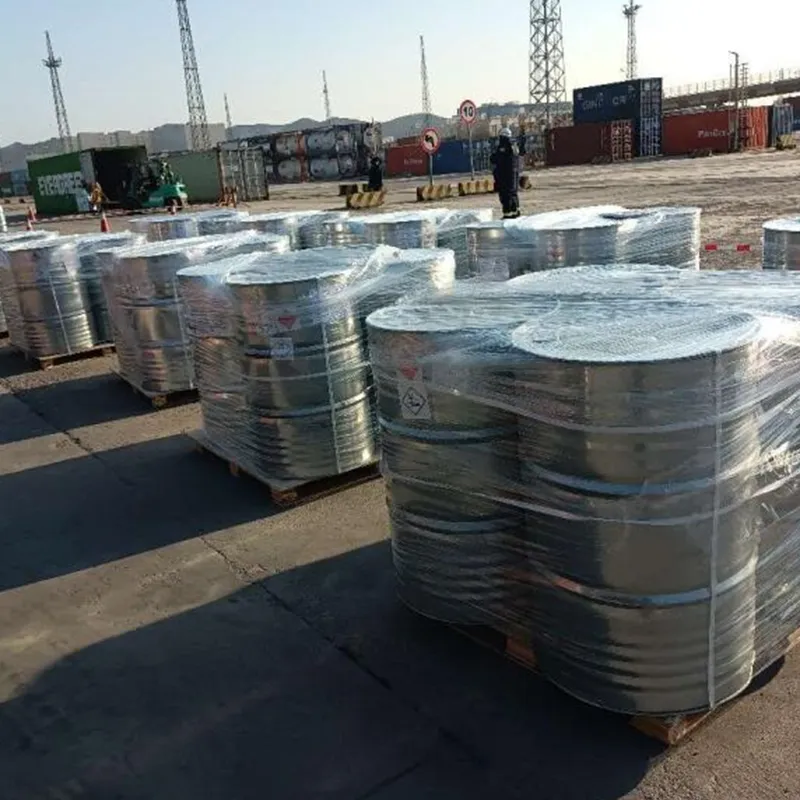
Understanding the Role of Emulsifiers E322 and E471 in Food Products
Understanding Emulsifiers A Focus on E322 and E471
Emulsifiers are critical components in the food industry, enhancing texture, stability, and shelf life of various products. Among the numerous emulsifiers used, E322 and E471 are two widely recognized additives that serve essential roles in food formulation.
What are E322 and E471?
E322, commonly known as lecithin, is derived primarily from soybeans, egg yolks, or sunflower seeds. It is a natural phospholipid that acts as a surfactant, helping to blend water and fats in food products. Lecithin's unique structure enables it to stabilize emulsions, which is essential in products like mayonnaise, salad dressings, and chocolate.
E471, on the other hand, refers to mono- and diglycerides of fatty acids. These are synthetic emulsifiers that are produced through the glycerol and fatty acid reaction. E471 is widely used because of its ability to improve texture and prevent fat separation in both liquid and solid food products. This emulsifier is commonly found in baked goods, margarine, and ice creams.
Functions and Applications
The primary function of an emulsifier like E322 is to stabilize emulsions, preventing the separation of oil and water phases. Lecithin, for instance, is an effective emulsifier due to its amphiphilic properties—having both hydrophilic (water-attracting) and hydrophobic (water-repelling) parts. This dual nature allows lecithin to reduce surface tension at the interface of oil and water, facilitating a stable mixture.
emulsifier 322 471

E471, with its broader range of applications, is utilized in various food products to enhance mouthfeel and consistency. It helps improve the structure and volume of baked goods by incorporating air into dough, leading to a lighter texture. In margarine and spreads, E471 ensures a creamy consistency while preventing separation. Additionally, it plays a vital role in frozen products, improving texture and preventing the formation of ice crystals.
Safety and Regulatory Status
Both E322 and E471 are considered safe for consumption when used within regulated limits. Organizations such as the European Food Safety Authority (EFSA) and the United States Food and Drug Administration (FDA) have deemed these emulsifiers safe for food use. However, individual reactions can vary, and some people may have sensitivities or allergies, particularly to soy-based lecithin.
Consumer awareness regarding food additives has grown significantly, leading to increased scrutiny over their use. As a result, many manufacturers are now opting for natural emulsifiers like E322, especially in products labeled as “clean label” or “free from artificial additives.” This shift reflects a broader trend in the food industry towards transparency and health consciousness.
Conclusion
Emulsifiers such as E322 (lecithin) and E471 (mono- and diglycerides) play indispensable roles in food formulation, ensuring product stability, texture, and overall quality. With their distinct functions and applications, these emulsifiers contribute to the culinary experience, making a wide range of food products appealing and enjoyable.
As the food industry continues to evolve towards cleaner labels and greater consumer awareness, understanding the roles and safety of these emulsifiers will be crucial. For manufacturers, balancing functionality with health-conscious formulations will be key to meeting the demands of today’s consumers. Thus, E322 and E471 will remain relevant in the world of food technology, ensuring delicious and stable products for everyone.
-
Aluminum Hydroxide: Quality Gels & Dried Gel AntacidNewsAug.31,2025
-
Buy High-Quality Trichloroisocyanuric Acid for Sale | TCCA 90% SupplierNewsAug.30,2025
-
Pure Sodium Dichloroisocyanurate Dihydrate | Powerful DisinfectantNewsAug.29,2025
-
Industrial Chemicals: Quality & Purity for Every IndustryNewsAug.28,2025
-
Nitrile Rubber Honoring Strict Production StandardsNewsAug.22,2025
-
Aspartame Ingredients Honoring Food Safety ValuesNewsAug.22,2025
-
Fertilizer for Balanced Plant NutritionNewsAug.22,2025
Hebei Tenger Chemical Technology Co., Ltd. focuses on the chemical industry and is committed to the export service of chemical raw materials.
-

view more DiethanolisopropanolamineIn the ever-growing field of chemical solutions, diethanolisopropanolamine (DEIPA) stands out as a versatile and important compound. Due to its unique chemical structure and properties, DEIPA is of interest to various industries including construction, personal care, and agriculture. -

view more TriisopropanolamineTriisopropanolamine (TIPA) alkanol amine substance, is a kind of alcohol amine compound with amino and alcohol hydroxyl, and because of its molecules contains both amino and hydroxyl. -

view more Tetramethyl Thiuram DisulfideTetramethyl thiuram disulfide, also known as TMTD, is a white to light-yellow powder with a distinct sulfur-like odor. It is soluble in organic solvents such as benzene, acetone, and ethyl acetate, making it highly versatile for use in different formulations. TMTD is known for its excellent vulcanization acceleration properties, which makes it a key ingredient in the production of rubber products. Additionally, it acts as an effective fungicide and bactericide, making it valuable in agricultural applications. Its high purity and stability ensure consistent performance, making it a preferred choice for manufacturers across various industries.





